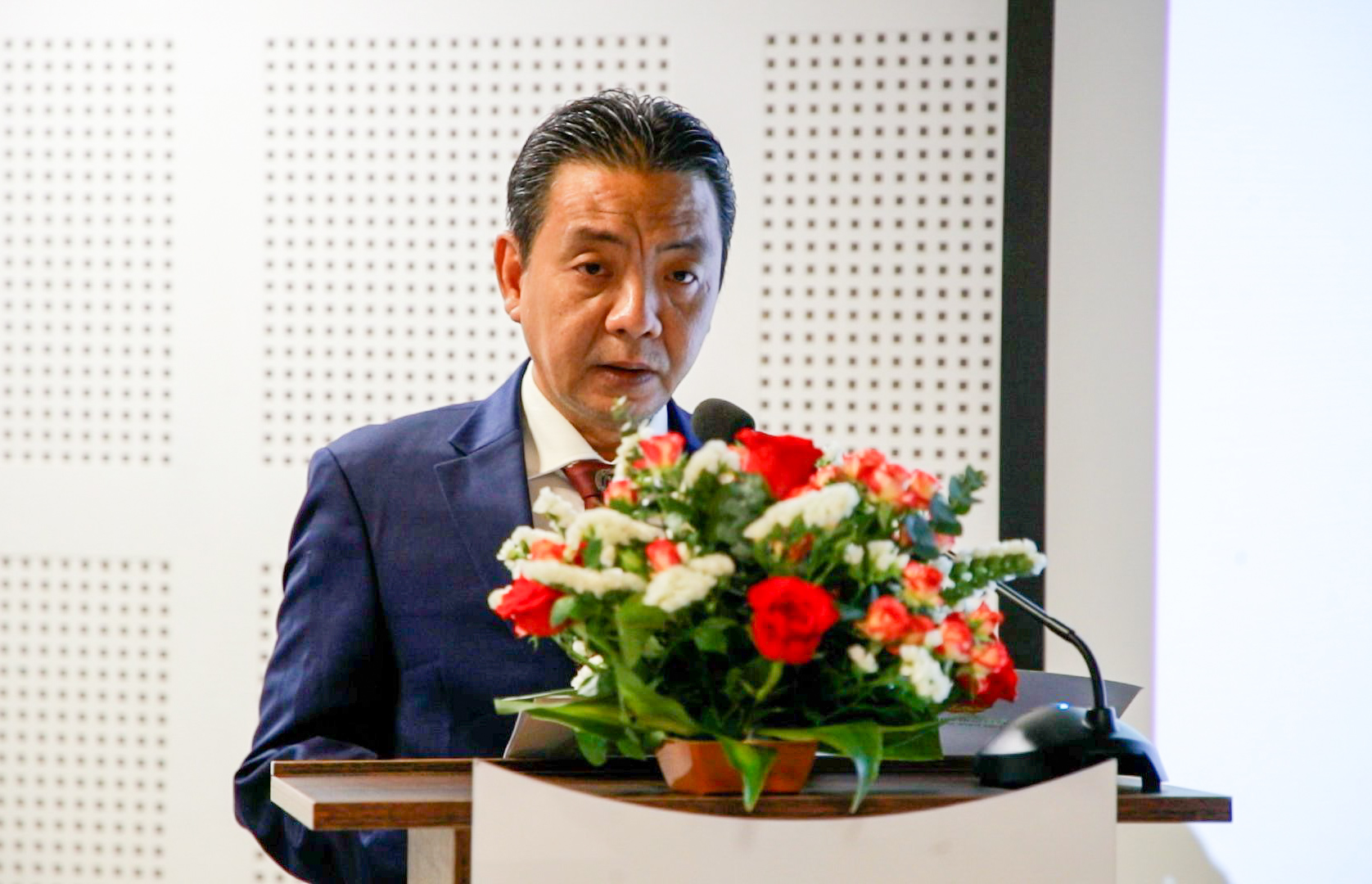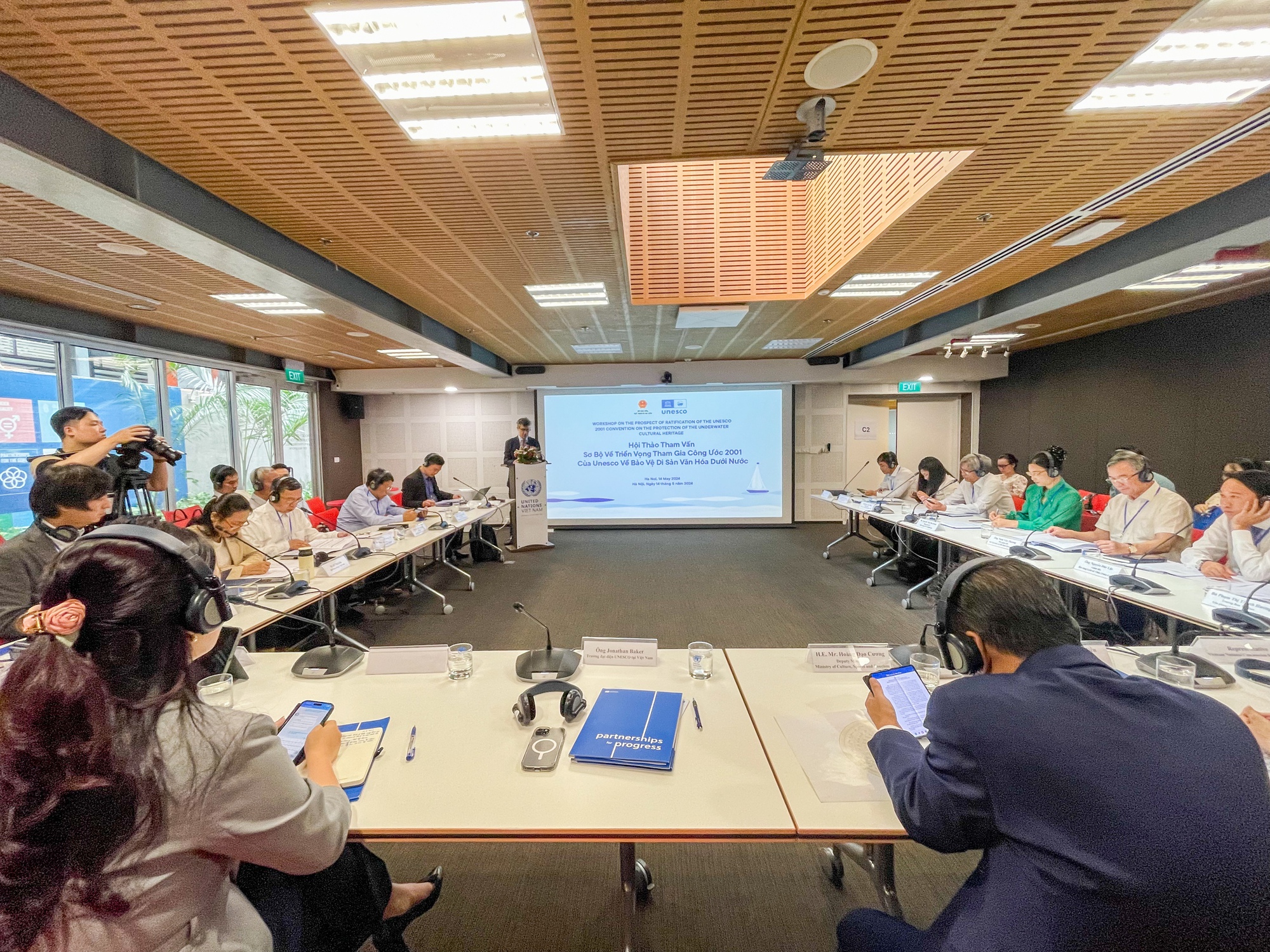(TITC) - On 14th May 2024, in Ha Noi, the Vietnamese Ministry of Culture, Sports and Tourism (MOCST) coordinated with UNESCO Office in Vietnam to organise the Workshop on the Prospect of ratification of the 2001 UNESCO Convention on the Protection of the Underwater Cultural Heritage. MOCST’s Deputy Minister Hoang Dao Cuong co-chaired the event.
Put Underwater Cultural Heritage under the protection
Speaking at the Workshop, MOCST’s Deputy Minister Hoang Dao Cuong said, Vietnam has officially been a member of the United Nations Educational, Scientific and Cultural Organization (UNESCO) since 1976. Since then, Vietnam has participated in 4/6 UNESCO Conventions.
So far, activities to protect and promote cultural heritage values in Vietnam have been put to the spotlight and achieved several good results, with more than 40,000 relics being inventoried, 08 world heritage sites recognized by UNESCO, 130 special national relics, 3,628 national relics, over 11,000 provincial relics.
Among them, there are many relics and archaeological sites related to underwater cultural heritage that have been ranked at all levels (Hoi An Ancient Town, Van Don Trading Port, Bach Dang Stake Yard, Cao Quy Stake Yard), archaeological relics at Cu Lao Cham...; and many ancient ships have been discovered and excavated: Hon Cau shipwreck (Ba Ria - Vung Tau), Hon Dam shipwreck (Kien Giang), Cu Lao Cham shipwreck (Quang Nam), Ca Mau shipwreck (Ca Mau). Mau), Binh Thuan shipwreck (Binh Thuan), Binh Chau shipwreck (Quang Ngai), and Dung Quat shipwreck (Quang Ngai)...
However, Vietnam is facing difficulties and limitations, such as lack of qualified and experienced human resources, lack of equipment to serve underwater archaeological research and excavation activities, and low investment funding… Acknowledging this problem, MOCST directed specialised agencies to carry out the task of researching the prospect of Vietnam joining the 2001 UNESCO Convention in the Annual Work Plan of the Subcommittee on Culture.

MOCST’s Deputy Minister Hoang Dao Cuong speaking at the Workshop (Photo: MOCST)
MOCST’s Deputy Minister Hoang Dao Cuong added, in the period from now to 2030, Vietnam is determined to integrate deeply and widely in cultural fields at regional and international organisations and forums, in which strengthening cooperation with UNESCO is one of the breakthrough solutions to implement the Cultural Diplomacy Strategy until 2030.
The Workshop on the prospect of ratification of the 2001 UNESCO Convention on the Protection of the Underwater Cultural Heritage is a practical action to concretize the content of cooperation between Vietnam and UNESCO for the period 2021 - 2025. The Workshop aims to create a scientific space for leaders, policymakers, experts, and scientists to exchange and discuss the role of underwater cultural heritage and the roadmap for Vietnam to join the 2001 UNESCO Convention.

Representative of UNESCO in Vietnam Jonathan Baker sharing at the Workshop (Photo: MOCST)
Representative of UNESCO in Vietnam Jonathan Baker stated, in recent years, Vietnam has made many internationally recognized progresses in preserving cultural heritage, presenting a multidimensional image of comprehensive and sustainable development in all fields. The 2001 UNESCO Convention on the Protection of the Underwater Cultural Heritage focuses on the often overlooked part of the world's cultural heritage: underwater sites and monuments of historical significance to humanity. This convention enables countries to promote sustainable and responsible underwater archaeological practices, anchoring this irreplaceable heritage in the cultural fabric of development.
Vietnam, with a strategic geographical political, military and cultural position on the Indochina peninsula and a coastline of more than 3000 km, has participated in the busiest maritime trade route connecting the Pacific and Indian Ocean. Such a rich history has led to the existence of many shipwreck sites and artefacts of great cultural and social significance, containing tangible and intangible traditional meanings, lessons and opportunity. These sites and artefacts, if properly protected, can strengthen national pride, present an attractive image of Vietnam to the world and attract both international and domestic investment.
Efforts made by Vietnamese Government
Identifying the importance of managing and protecting underwater cultural heritage, numerous legal documents on underwater heritage protection have been issued by the State of Vietnam. According to Ms. Le Thi Thu Hien, Director of the Department of Cultural Heritage (Ministry of Culture, Sports and Tourism), many localities have conducted research and excavations to preserve and promote these heritage values. A typical example is Hoi An. In addition to the cultural heritage system present above ground and underground that has been recorded, researched, managed, ranked, and promoted, Hoi An also has abundant potential for Underwater Cultural Heritage.
Since the early 90s of last century, ceramic artefacts related to ancient shipwrecks have been discovered off the coast of Cu Lao Cham. The results of the exploration and excavation from 1997-1999 have proven that. In the early years of the 21st century, the body of a boat was discovered in Cam Thanh. Recently, at the end of 2023, the wreck of a quite large boat also appeared on the coast of Cam An - Hoi An. Along with that, some traces of ancient residence also appeared in this area. In addition to boat parts such as boat logs, rudders, anchors and ceramics, some underwater cultural heritage items such as stakes/embankments - harbour river bank reinforcement, cannons,… were also discovered in Hoi An.

Overview of the Workshop (Photo: MOCST)
Many collections of artefacts have been displayed to promote their values at specialised museums in Hoi An such as Hoi An Museum of History and Culture, Museum of Trade Ceramics. Especially in 2022, the Hoi An Center for Cultural Heritage Management and Preservation has set up a thematic gallery with the theme "Chu Dau Pottery - Antiquities from the seabed of Cu Lao Cham" to introduce the unique value of Chu Dau potteries to the public, thereby creating add highlights and attractiveness of the museum to visitors.
At the same time, the work of mobilising people to protect and donate artefacts to museums related to underwater cultural heritage is regularly paid attention. Recently, some people in Cam An donated 18 artefacts to Hoi An museum, including many artefacts related to underwater cultural heritage.
In the framework of the Workshop, delegates, experts, and researchers also shared and exchanged difficulties and challenges in managing, preserving, and promoting underwater heritage in Vietnam. From there, solutions are proposed to contribute to improving the quality of underwater cultural heritage conservation.
Tourism Information Technology Center